Discovering Königstein
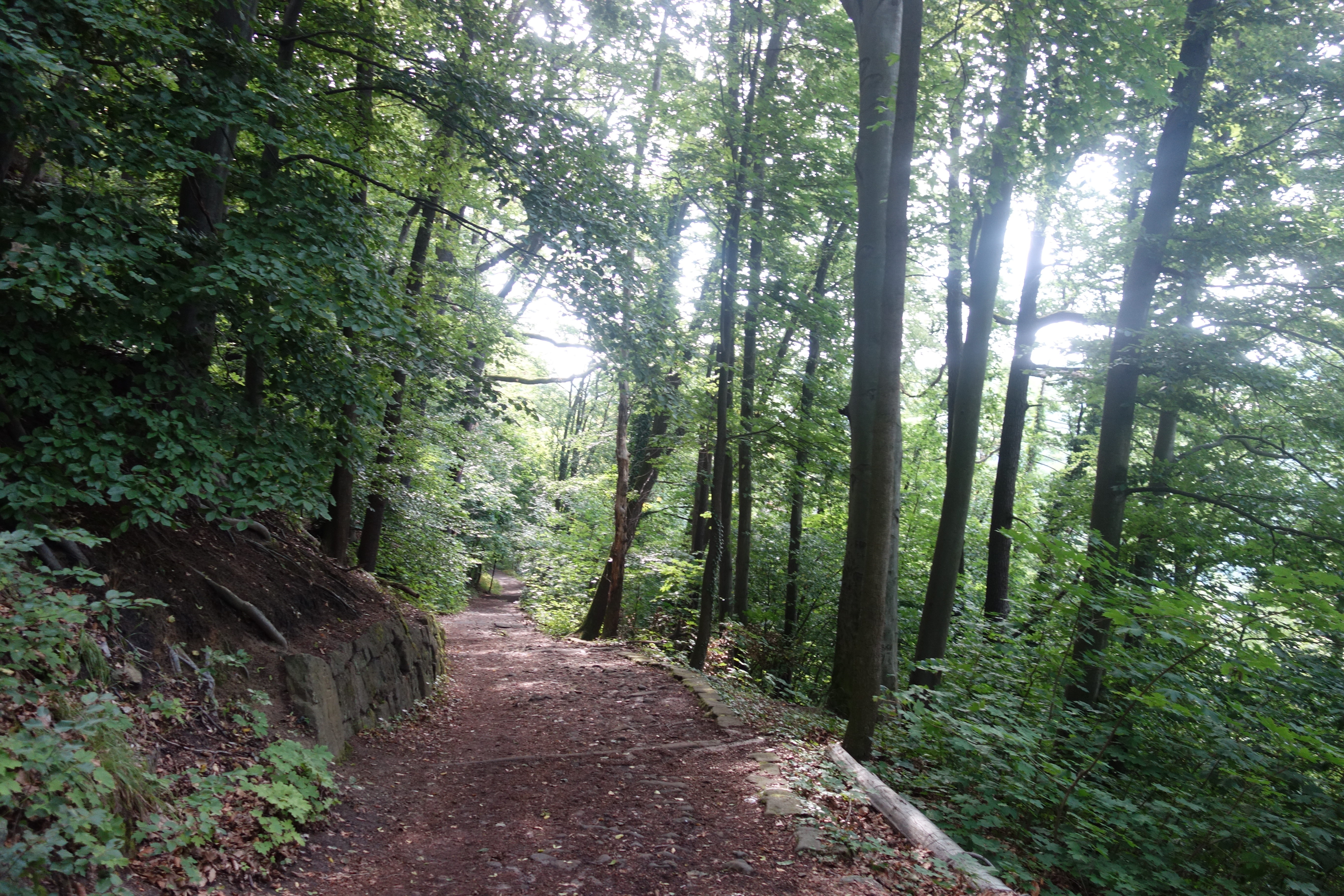

Neue Schanke had been our base all evening. In fact, it was not possible to just explore the village itself. We always had to do that by climbing the bit to the castle and then descending considerably. On the third walking day, however, we would do this as part of the route, after a breakfast in which artistically cut sausages stole the show.
So after checking out, we had to climb again and then descend quite briskly through a forest. So we arrived in Königstein which has quite a pleasant centre. It made it extra unfortunate that we should have spent the night on the other side of the hill. Anyway, we could stock up on provisions for two days here and take a sanitary stop. I did suddenly fear that my glasses had been left behind in our previous stay, but returning was not really an option. It was waiting for luggage tonight.
Another Malerweg icon

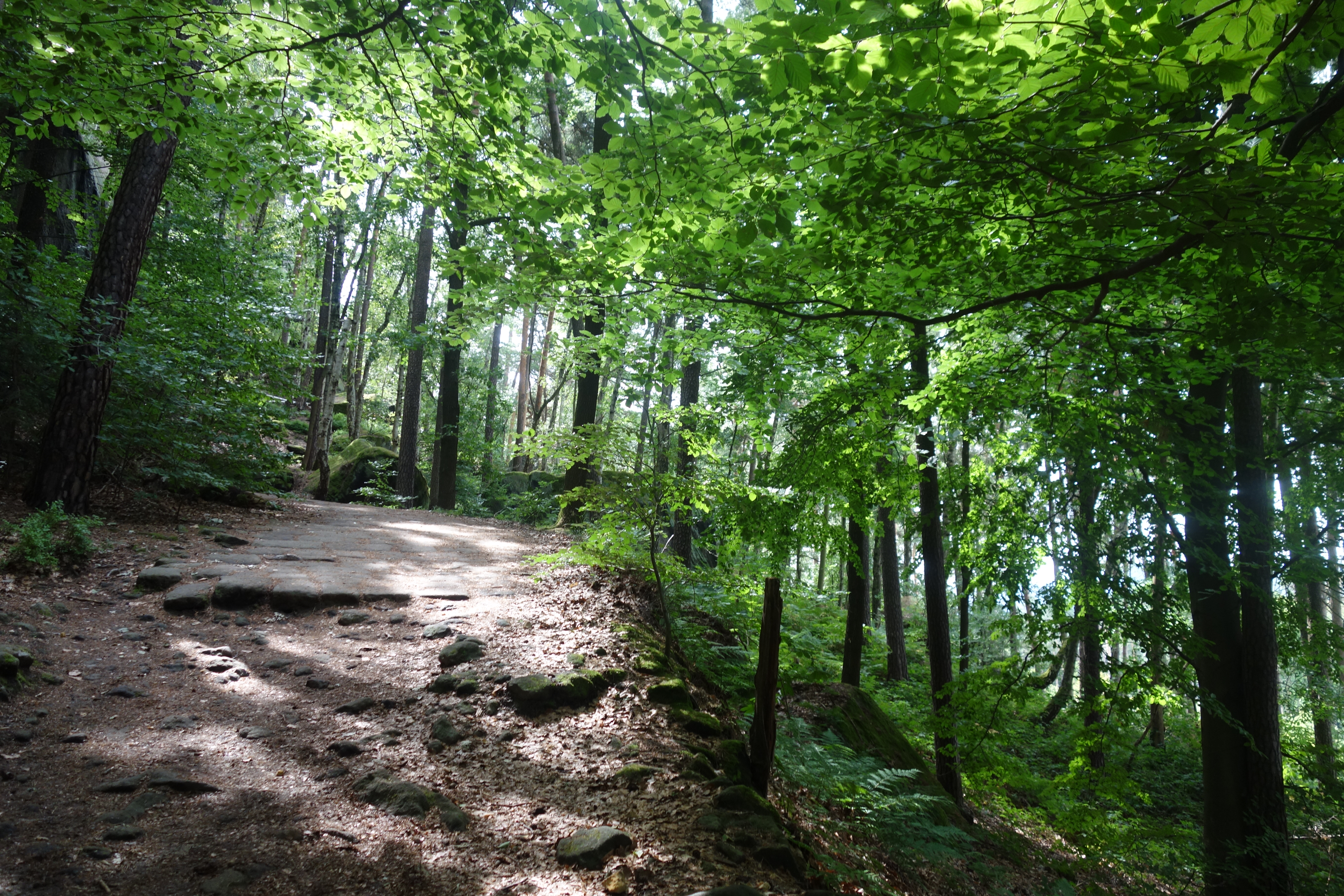
Once out of Königstein, there was immediately a steep ascent, first along a small local road, then again along a forest road and so to a forest, where we would spend quite a long time on this short hike. The narrow, winding path led past rock formations and hilltops with names like Kletterhöle and Quirlwachter, as well as a stone drinking trough. Then the forest was briefly abandoned before heading to the highlight of the day, the Pfaffenstein massif, not much later. The way towards it was already accompanied by an increase in jagged and imposing rocks and formations.


And we could feast on a triptych of natural entertainment. First was the side trip to the Barbarine, a 42-metre-high rock needle and local darling. It required some searching but fortunately we did not miss this gem. Perseverance won out in this one. The road to it was also via a first narrow gorge.
Rocks and descents
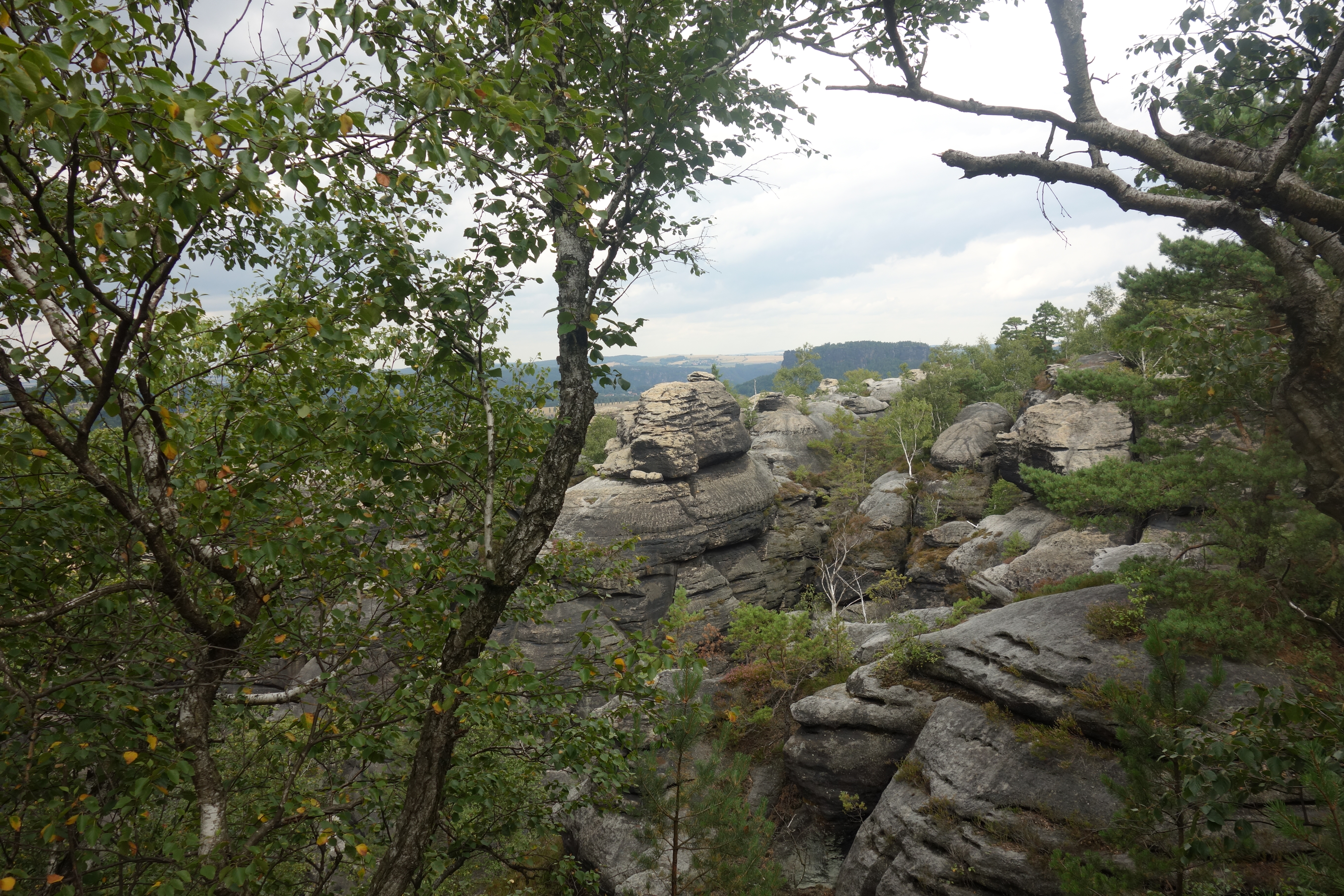

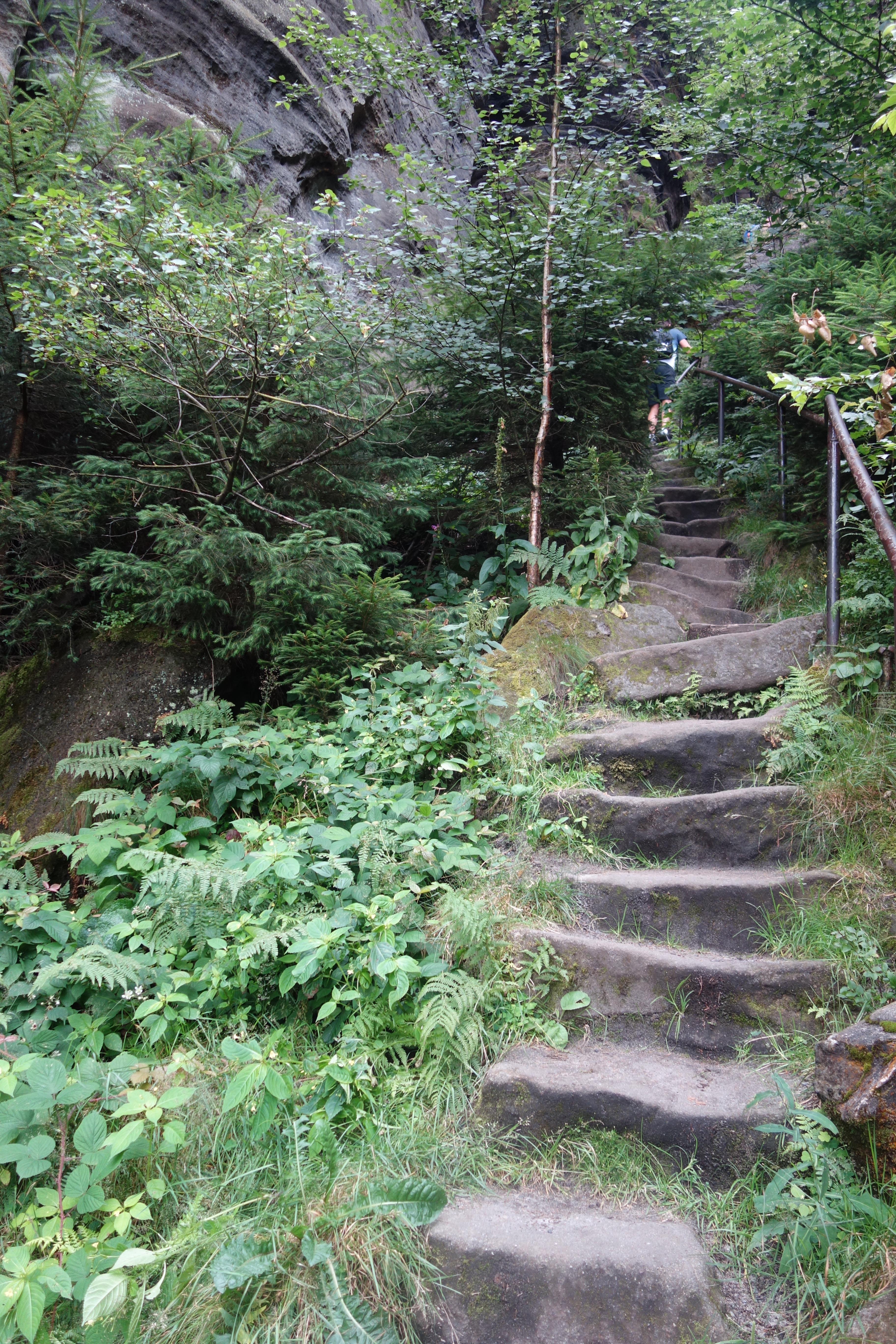
Once we returned, we had two options. Option 1 was an easy descent, option 2 gave us panorama but, according to the guidebook, also a tough descent. We opted for the full experience and thus chose the latter. After doing some climbing and passing the local hospitality spot on the plateau, we did a tour of the panoramas of all kinds, including the Teufelskessel, the Dom and the Einsamer Ritter. It also turned out to be a good picnic spot. What did stand out were the many young parents and very young babies who also ventured the hike.
Then there remained the descent along the so-called Nadelöhr, a bottle neck that required a ladder and steep iron steps for a while. I managed to wriggle through with some scraping of the rucksack. The sections after that were relatively challenging due to the height differences of the stones and steps, but rather traditional in terms of descent skills.
A spa town with limited restaurants

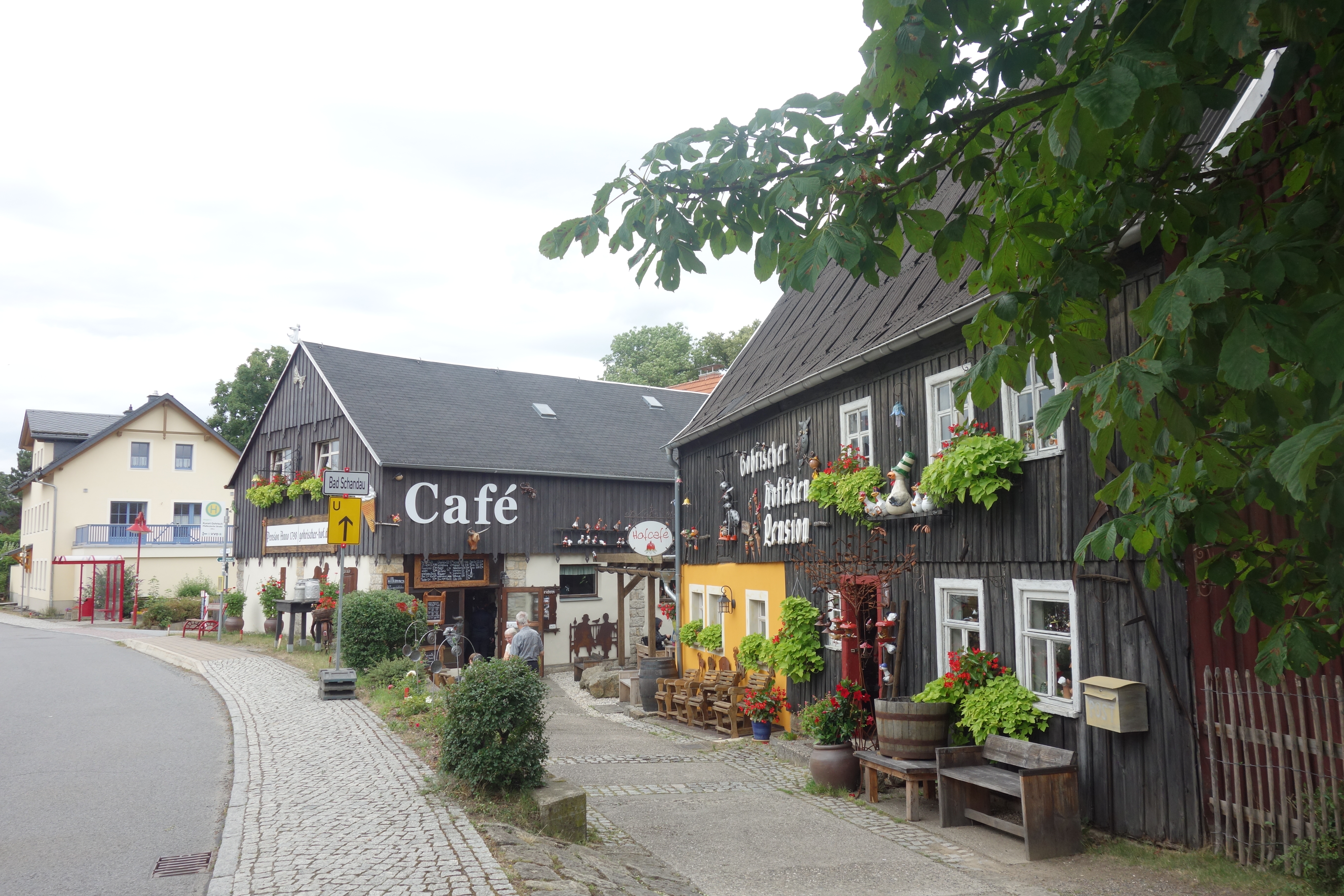
We descended further to Pfaffendorf, a small cosy village, and finally to Kurort Gohrisch, equally cosy, slightly larger, but also with many lodgings and little catering. Luckily, we stayed at Pension Villa Irena, where they were helpful enough to make reservations for us. Just before, we had also tried our first (and only) ice cream.
Eventually we made our way to Margaretehof, a cosy restaurant belonging to the hotel of the same name. We ventured in for a starter (goat cheese croquettes and mushroom soup). For the main course, we took the local speciality, Bohemian goulash with knödelen. It was tasty and the service was friendly. I unintentionally surprised the waitress by accidentally giving a twenty euro note instead of five as a tip. Fortunately, she was honest enough to say that was really too much.
Find more walks on Malerweg here: https://seatothelandbeyond.wordpress.com/malerweg-and-sachsische-schweiz/
























































































